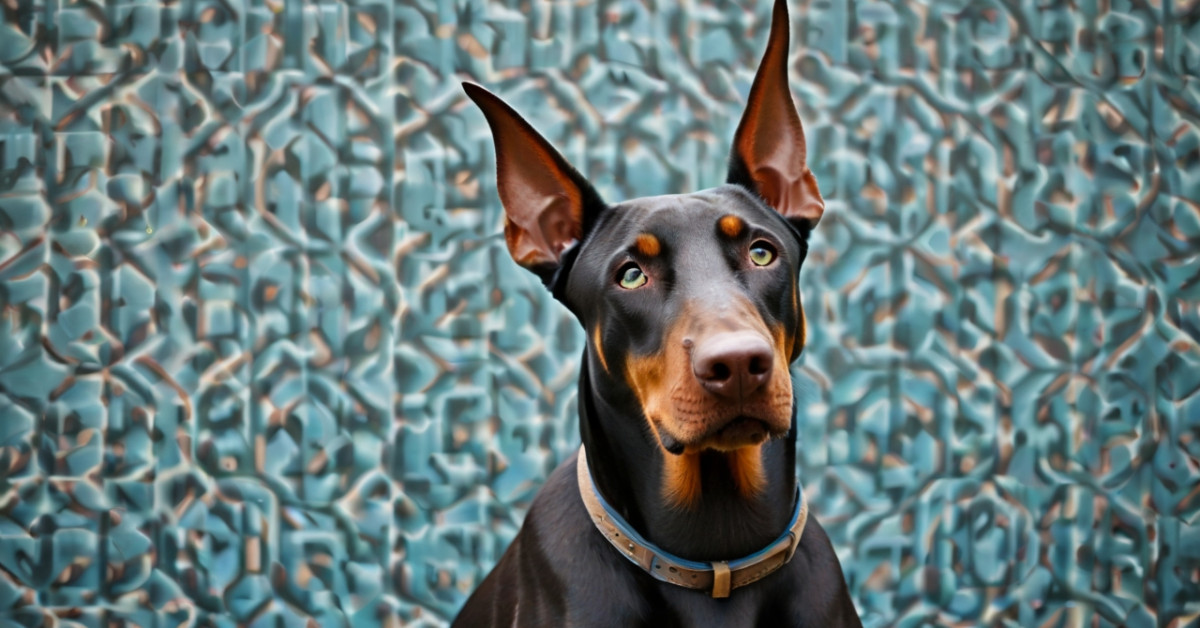The Unique Charm of Blue and Tan Dobermans
My fascination with blue and tan Dobermans began one sunny afternoon when my neighbor Mike, a cheerful fellow who loves his dogs like family, introduced me to his newest family member, Bella. Her coat shimmered in the sunlight, with those striking blue and tan shades making her look like a creature from a fantastical tale. As a veterinary expert, I’ve encountered many dog breeds, but there was something extraordinary about this mix that piqued my interest.
Striking Characteristics
Blue and tan Dobermans have a truly unique appearance, and it’s one of their biggest draws. Ever seen a dog that stops traffic just by taking a stroll down the street? That’s what happens with these beauties. Their coat has a mystical quality, almost as if they’ve been brushed with fairy dust. It’s not just the color, but the way it feels too—soft like silk against your skin. Whenever I run my fingers through Bella’s fur, I’m reminded of the first snowfall, cold yet comforting.
The Genetics of Blue and Tan
Genetics can be a bit of a mind-boggler, but it’s all about how those recessive genes play their cards. Did you know that the blue color comes from a dilution gene affecting the standard black coat? That means these Dobermans aren’t a separate breed but a color variation. And here’s another fun fact: the same dilution gene can cause hair thinning in some dogs, a condition known as Color Dilution Alopecia. Mike, in his usual cheerful manner, often jokes that Bella’s the unicorn of the neighborhood, rare and enchanting.
Personality Traits and Temperament
Now, let’s talk personality. These dogs aren’t just a pretty face. They’re spirited and affectionate, with a pinch of sass for good measure. Remember my cousin Ashley? She has a blue and tan Doberman, Zeus, who’s as loyal as they come. Every day, Zeus waits by the window for hours until Ashley returns from work. They’re intelligent too—sometimes too much for their own good. Throw in their protective instincts and you’ve got yourself a real-life superhero.
Training and Socialization
Training these pups can be a bit of an adventure. They’re thinkers, you see, and you’ve got to keep them on their toes. I remember the first time I tried teaching Bella to sit; she just stared at me like, “Seriously, that’s the best you got?” 😄 But with consistency and love, they catch on fast. Using positive reinforcement works best. Those treats? Pure magic.
Health and Care
When it comes to health, blue and tan Dobermans can have some issues, just like any other pooch. Regular vet check-ups are vital to catch anything early. Also, don’t skip on their dental care—it’s often overlooked but super important. The smell of minty-fresh doggie breath after some good dental cleaning? Priceless!
The Bond You’ll Share
In my years as a vet, I’ve seen people find a friend in their dogs. With a blue and tan Doberman, you’re getting a little extra sprinkle of wonder. My evenings with Bella and Mike often end with the three of us on the porch, sipping coffee—well, not Bella of course—watching the world go by. It’s moments like these that remind me why I love what I do. 😊
Final Thoughts: Why They’re a Worthy Companion
So there you have it. Blue and tan Dobermans aren’t just stunning aesthetically. They bring love, loyalty, and a sprinkle of adventure. In closing, embracing a blue and tan Doberman might just be one of the best decisions you can make. Thanks for joining this little canine journey with me! Remember, life’s too short to not enjoy with a wagging tail by your side! 🐾
Oh, and here’s a quirky tidbit to impress your friends: the Doberman was originally bred by a tax collector named Karl Friedrich Louis Dobermann in the late 1800s. Imagine putting that on your caring canine’s resume!
Thank you, dear reader, for tagging along on this delightful exploration of the blue and tan Doberman world. Catch you later, alligator!










